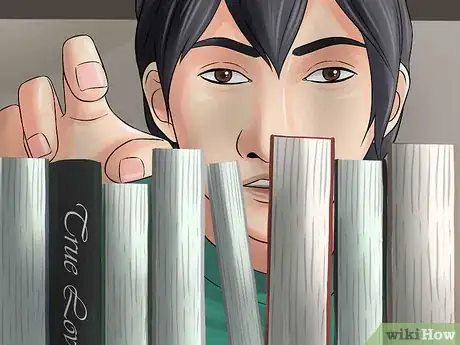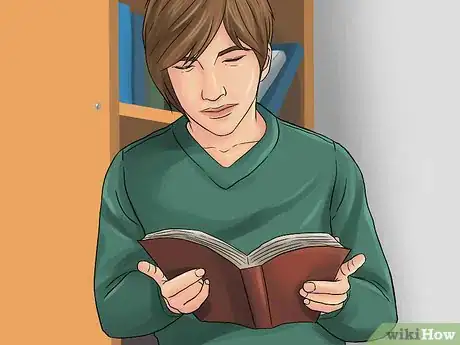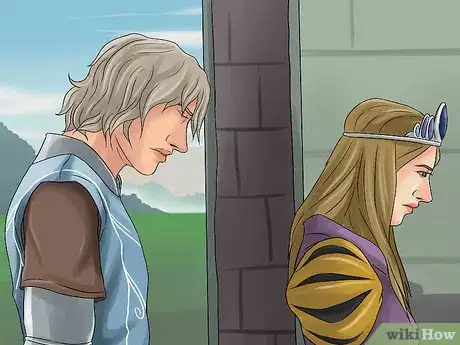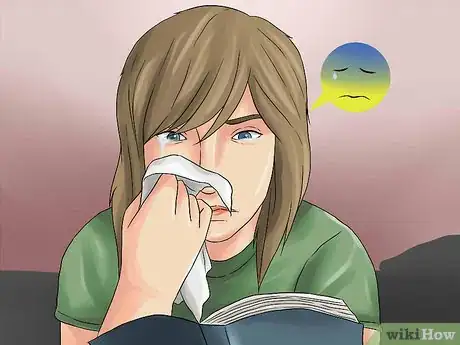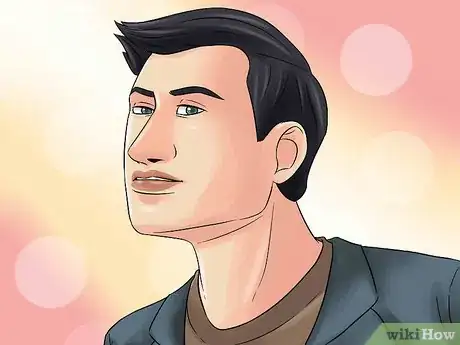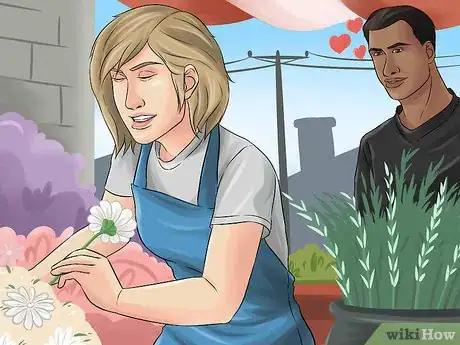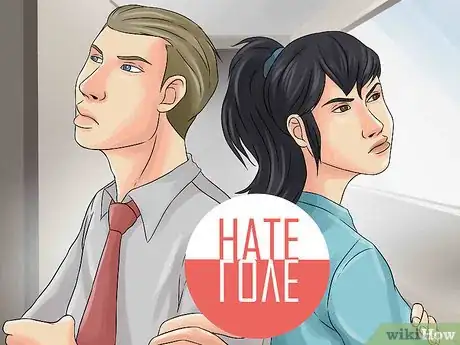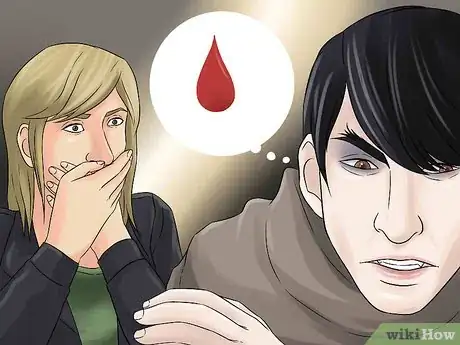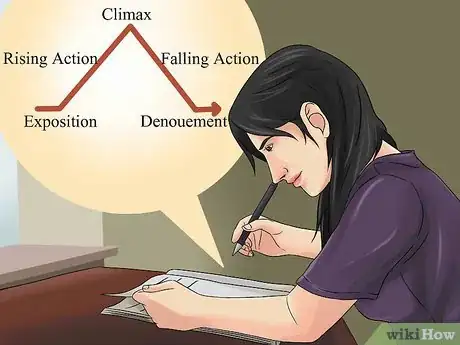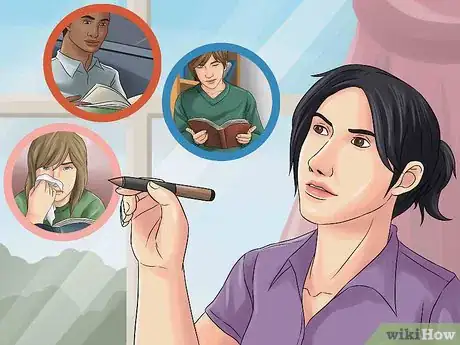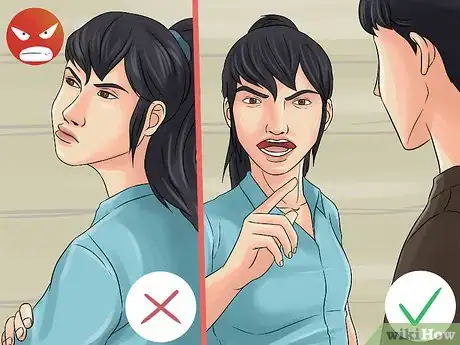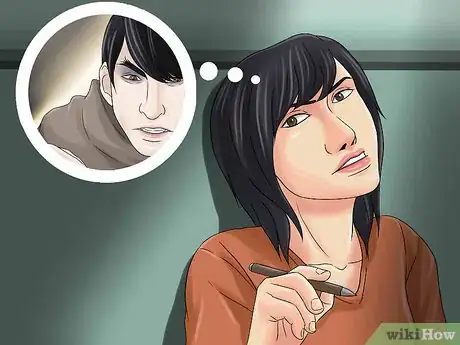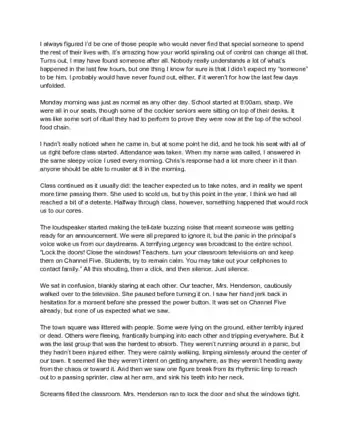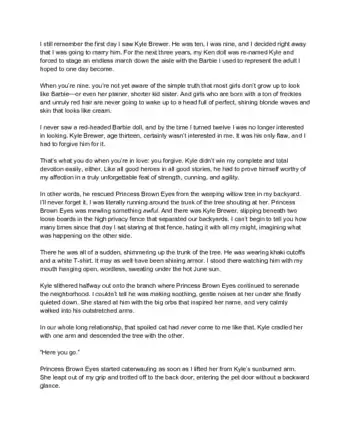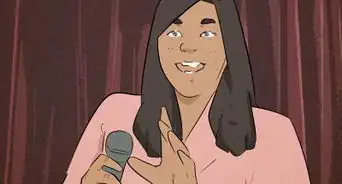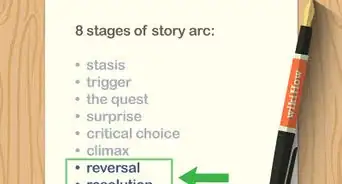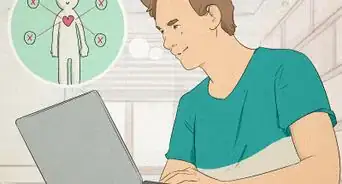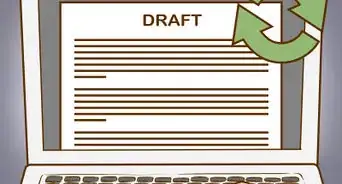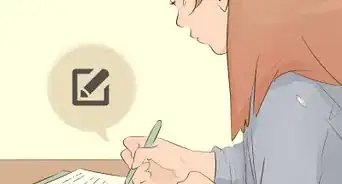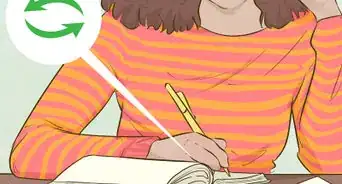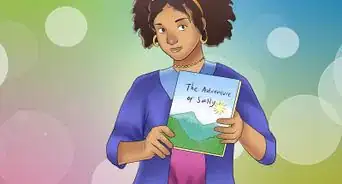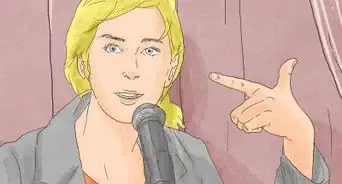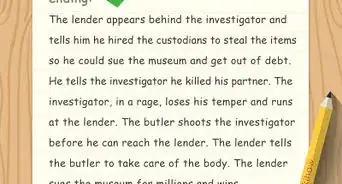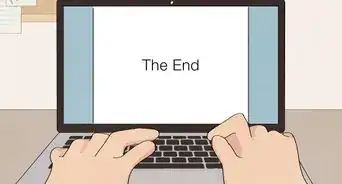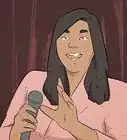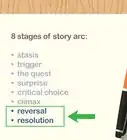This article was co-authored by Stephanie Wong Ken, MFA. Stephanie Wong Ken is a writer based in Canada. Stephanie's writing has appeared in Joyland, Catapult, Pithead Chapel, Cosmonaut's Avenue, and other publications. She holds an MFA in Fiction and Creative Writing from Portland State University.
There are 8 references cited in this article, which can be found at the bottom of the page.
wikiHow marks an article as reader-approved once it receives enough positive feedback. In this case, 85% of readers who voted found the article helpful, earning it our reader-approved status.
This article has been viewed 170,684 times.
Teen romance stories, or romance writing for young adults (generally ages 13-18), are a hot market. The demand for romance YA novels has steadily grown in popularity, partly thanks to the highly successful Twilight series by Stephenie Meyer. The market for romance stories for teens is saturated with titles and is highly competitive, as many writers are trying to create YA romance that will prove popular for teens and become a runaway success.[1] But getting the details right in a teen romance story requires a good sense of the YA romance genre, a clear story outline, and a solid first draft.
Steps
Analyzing the Genre
-
1Understand the teen romance genre. Teen romance writing focuses on falling in love as a teenager, a singular and intense experience that many young teens hope to experience or are about to experience. Most YA novels have protagonists that are under 18 years old, and are written from the perspective of a teenager.[2]
- The target audience for YA novels are 13-18-year-olds, teen readers who are dealing with feelings of love and desire in their lives. Teen romance can give these young readers access to these emotions through fictional characters and stories, and help them figure out how to deal with their romantic feelings.[3]
- Most teen romance novels have female protagonists, as many YA novels are written by women and are targeted to a young female audience. However, there are several prominent YA romance novels that are written by men and/or feature male protagonists.
-
2Read examples of teen romance. Study up on the genre by looking at best selling examples of teen romance stories. For example:
- The Twilight series, by Stephenie Meyer. This four book series is one of the biggest selling teen romance series in publishing. Meyer creates a strong, unique female protagonist (Bella Swan) and gives her relatable teen issues like a distant father, fitting into a new town, feeling isolated and alone. These teen issues are mixed in with supernatural elements, like a handsome vampire lover, to create a compelling romance for teens.[4]
- The Fault in Our Stars, by John Green. The story of a cancer stricken teen, Hazel, and her encounter with Augustus Waters, is a favorite among YA readers.[5]
- Eleanor & Park, by Rainbow Rowell. This story of two love struck sixteen-year-olds uses two strong main characters to tell a classic romance.[6]
- To All the Boys I've Loved Before by Jenny Han follows Lara Jean when her secret love letters are mailed to the subjects who were never intended to read them.
Advertisement -
3Analyze the protagonist and the love interest. How is the main character or protagonist developed in the book? For example, though they are both female protagonists, the main character in Twilight, Bella Swan, is very different from the main character, Hazel, in The Fault in Our Stars. Each character views their world differently, and describes or reacts to other characters in each story differently. However, both books tackle the darker side of being a teenager (loneliness, isolation, death), another major element of a YA novel.[7]
- The love interest in Twilight follows the standard descriptor of male love interests in YA novels: being ridiculously good looking.[8] This is the same for Augustus in The Fault in Our Stars, who is described as “hot” by Hazel and falls into the familiar trope of the handsome, mysterious male love interest.
-
4Determine the obstacles or problems between the two characters. A good romance story needs to have conflict and stakes. This could be a strong hatred or dislike of each other that eventually grows into love or a misunderstanding or mistake early in the story that keeps the lovers apart or away from each other. Usually, the higher the stakes, the more engaged your reader will be.
- For example, in the first Twilight book, the stakes are raised when Edward and his family defend and save Bella from a sadistic vampire. The main character is placed in danger, and her relationship with her love interest is tested. This conflict then sets the stakes for the rest of the books in the series.
-
5Look at the ending. As a reader, were you satisfied with the ending of the book? Did you feel the book's ending dragged on or felt too predictable? How did the writer bring together all the narrative threads of the previous chapter to create a believable and satisfying ending?
- The ending of The Fault in Our Stars ends not on a happily ever after resolution for Hazel and Augustus, but instead allows dark themes like death and suffering to be part of the ending. Though the ending may not follow the familiar structure of a romance, it fits within the model of YA novels, where the main character may not get what she wants, but she experiences a transformation or an epiphany.
Creating a Story Outline
-
1Create your main character. Though many YA romance novels focuses on a female protagonist, you do not have to limit yourself to a female main character. A male protagonist or a nonbinary protagonist are also options. However, when creating your main character, try to avoid falling into cliche or familiar territory. You want your protagonist to be engaging and unique enough to keep your reader turning the page.
- Avoid the trap of a writing a “Mary Sue”. "Mary Sue" is shorthand for characters who lack flaws to the point the plot suffers. Mary Sues are often self-insert characters. Mary Sues lack character flaws and often can do no wrong, and when they do wrong, they are often immediately forgiven. No only does this create a flat main character that is not relatable to the reader, it also kills any stakes in the story and renders the story predictable. (Male Mary Sues are often called "Gary Stus" or "Marty Sues".
- Rather than let the main character's crush or romantic desires define them, develop them as a fully-formed character separate of them crush. Think of your main character as the foundation for the romance you are going to build in the book. Make them a person the average reader can identify with, full of insecurities, awkward tendencies, and teenage impulses.
- Use a teenager you know as a model, or think back to how you felt when you were a teenager. You likely did not feel perfect every day or get what you wanted. Give your main character deep rooted struggles and show her insecurities to your readers so they will sympathize with her and relate to her.
-
2Develop a love interest. Because most teen romance stories are read by a female audience, your love interest will likely have to possess one overriding feature: being very good looking.[9]
- Often called a “Gary Stu” (to his “Mary Sue”), most traditional teen romances contain a highly desirable and physically attractive love interest. However, it's important not to go too extreme with the desirable traits and physical beauty of the love interest. Cliche descriptions of men like “tall, dark, handsome” or “as beautiful as a Greek god” or “really damn hot” should be avoided.
- Though you will likely need to imbue your male love interest with a high level of physical desirability, it's important to also stress personality traits or attributes that make him of interest. Try to keep his character grounded by giving him insecurities and issues that mirror those of the protagonist. Though there should be an element of fantasy to the love interest, you want the love interest to seem believable and similar to a living, breathing person, with issues.
-
3Think about how the two lovers meet. Establish a connection between the two characters through a shared hobby or interest, a friend or acquaintance in common, or even an awkward conversation while waiting in line. Avoid familiar set ups like “love at first sight” or the male love interest simply sweeping the female protagonist off her feet.[10]
- The lovers should have an immediate connection, but it doesn't always have to be a positive one. They may initially dislike each other, or not think very highly of each other. Or they may clash and argue. Let the connection between them grow slowly over the course of the story. Often, young romance involves a lot of yearning, miscommunication, and awkwardness.
- One mistake many YA love stories make is to jump right into the smoldering look into each other's eyes and an immediate love. But letting the tension between the two characters build over time will create a more effective story, and give your reader a reason to keep turning the page.
-
4Think of a problem. A story is nothing without a problem. This is especially true of teen romance stories, as the lovers are often placed in a conflict or faced with an obstacle that tests their love and devotion to each other. The problem can also cause the lovers to admit their romantic feelings or to realize their romantic feelings.
- The problem in the story should act as a way to discover more about your protagonist and/or your love interest. It should also create a conflict for the protagonist and for the love interest.
- Create a problem that fits the stakes of the story. If you are writing a teen romance novel that involves supernatural elements, you may use the discovery the love interest is a vampire as an initial problem. If you are writing a romance novel about a cancer patient, the problem may be the amount of time she has left to spend with her lover.
-
5Create a plot outline. Use Freytag's Pyramid to structure your story. Structuring your story in an outline before you start writing will help you get a sense of the big picture.
- Introduction or Exposition - Set the scene. Let the readers meet your main character. Introduce your reader to the protagonist and the setting.
- Inciting Incident - This is the thing that gets your story rolling, or an incident that starts the action. It should signal the beginning of the main conflict. In most teen romance stories, this is where the love interest is introduced. For example, your protagonist, a sixteen-year-old cancer patient with several weeks to live, meets a seventeen year old cancer patient with less time to live and they connect.
- Rising Action - Where things in your story become complicated. The stakes of the story should start to rise, due to inciting incident or the main problem in the story. This could be through showing the two characters growing closer together, or further apart. This could also be in the form of a quest, like Hazel and Augustus's trip to Amsterdam in The Fault in Our Stars by John Green.
- Climax - The turning point of your story. This section or chapter should have the highest level of tension in the book and be the most exciting moment or event.
- Falling Action - The main conflict has been resolved, or not resolved, and events happen as a result of the climax.
- Resolution: Your protagonist solves the main problem or conflict, or it is solved for her.
- Denouement - Wrapping up the story and letting any last details fall into place. Remaining threads may be tied here (though you may choose to leave some untied). In some books, the author will end on a theme or hint at other possibilities for the characters, beyond the last page.
Writing a First Draft
-
1Write for your audience. Remember your readers are teenager, and are often going through heavy teen issues around love, loneliness, and desire. Avoid formal terms and language, and use descriptions that will seem accessible to a teenager.[11]
- Rather than dumb down your language, listen to how teenagers you know talk and interact. The goal is to create believable dialogue and reactions between characters. You want your reader to relate to the your protagonist and her perspective on the world.
- For example, in Twilight, there is a scene where Bella tries to flirt with Jacob, a 15 year old boy who turns into a werewolf when the sun goes down.[12] Their dialogue is awkward and hesitant. Bella feels embarrassed by her attempts at flirting and tries to hide her attraction to Jacob. Many teenagers can likely relate to this scene, and understand how Bella might be feeling. This makes Bella an effective protagonist in the story.
-
2Show, rather than tell. This is a basic writing rule for all genres, not just teen romance. Rather than direct the reader on how they should feel in a scene, show an emotion through characters' actions and through dialogue.[13]
- For example, rather than tell the reader, “Bella was upset at Jacob. She felt betrayed”, you can use her action and dialogue to show these emotions. “Bella glared at Jacob, her fists clenched at her sides, her mouth twisted into a frown. “I can't believe you did that,” she yelled at Jacob.”
-
3Tackle relatable themes. Think about what teens might be struggling with at their age. Often, teens are trying to figure out who they are going to be as adults. They may experience big life issues, like moving to a new city, realizing feelings of desire and love, and wrestling with sexual attraction. A good YA romance novel will look at the larger themes of being a teenager, and incorporate them into the novel.[14]
- Consider a big theme you may want to explore in your teen romance story. This could be as simple as a protagonist with a special ability that she keeps hidden, causing her to feel like an outsider or an outcast. Or your protagonist could be wrestling with themes like death, unrequited love, or discovering their identity.
-
4End on transformation. Create an ending that shows the transformation of the main character due to an experience, rather than an ending that gives the protagonist a happy resolution. Often, happy resolutions where the protagonist gets exactly what she wants can feel false or unrealistic. The example below has spoilers for The Fault in Our Stars.
- For example, in The Fault in Our Stars, the protagonist, Hazel, is forced to confront the death of her first love, Augustus, but in doing so, she realizes the value of her life and the value of falling in love with someone.
- You still can end on a happily ever after!
Sample Teen Romance Stories
Community Q&A
-
QuestionWill my school think I'm weird if I write a romance novel at the age of 13?
 Community AnswerNot at all! An early start is never bad for anything.
Community AnswerNot at all! An early start is never bad for anything. -
QuestionHow can I write a love story if I am not yet a teenager?
 Community AnswerIf you or your friends have had experience with romance, you can first write about your personal experiences. If not, you can still use your imagination. Read many teen romance stories to get an idea of popular plots. If while reading you find yourself wondering why a story didn't develop a different way, you can turn that idea into your own story.
Community AnswerIf you or your friends have had experience with romance, you can first write about your personal experiences. If not, you can still use your imagination. Read many teen romance stories to get an idea of popular plots. If while reading you find yourself wondering why a story didn't develop a different way, you can turn that idea into your own story. -
QuestionWhat is the best way to write a romance story about two girls falling love if I am concerned with how others might view the contents of my book?
 Community AnswerJust write your story however you think it needs to be told. It only matters how you feel about it in the end. People who want to read it will and those who don't will have wasted an opportunity to expand their horizons.
Community AnswerJust write your story however you think it needs to be told. It only matters how you feel about it in the end. People who want to read it will and those who don't will have wasted an opportunity to expand their horizons.
References
- ↑ http://www.writersdigest.com/editor-blogs/there-are-no-rules/writing-for-the-young-adult-audience
- ↑ http://www.writersdigest.com/editor-blogs/there-are-no-rules/writing-for-the-young-adult-audience
- ↑ https://nancyisanders.wordpress.com/2013/03/06/genre-teen-romance-part-1/
- ↑ http://www.goodreads.com/series/45363-twilight
- ↑ http://www.goodreads.com/book/show/11870085-the-fault-in-our-stars
- ↑ http://www.goodreads.com/book/show/15745753-eleanor-park
- ↑ http://www.writersdigest.com/editor-blogs/there-are-no-rules/writing-for-the-young-adult-audience
- ↑ https://www.thelist.com/34489/cast-twilight-really-look/
- ↑ http://writeoncon.com/08/17/i-dont-care-that-hes-hot-building-believable-romance/
- ↑ http://writeoncon.com/08/17/i-dont-care-that-hes-hot-building-believable-romance/
- ↑ http://writeoncon.com/08/17/i-dont-care-that-hes-hot-building-believable-romance/
- ↑ http://www.oprah.com/entertainment/Excerpt-from-Stephenie-Meyers-Twilight
- ↑ http://writeoncon.com/08/17/i-dont-care-that-hes-hot-building-believable-romance/
- ↑ http://www.writersdigest.com/editor-blogs/there-are-no-rules/writing-for-the-young-adult-audience
